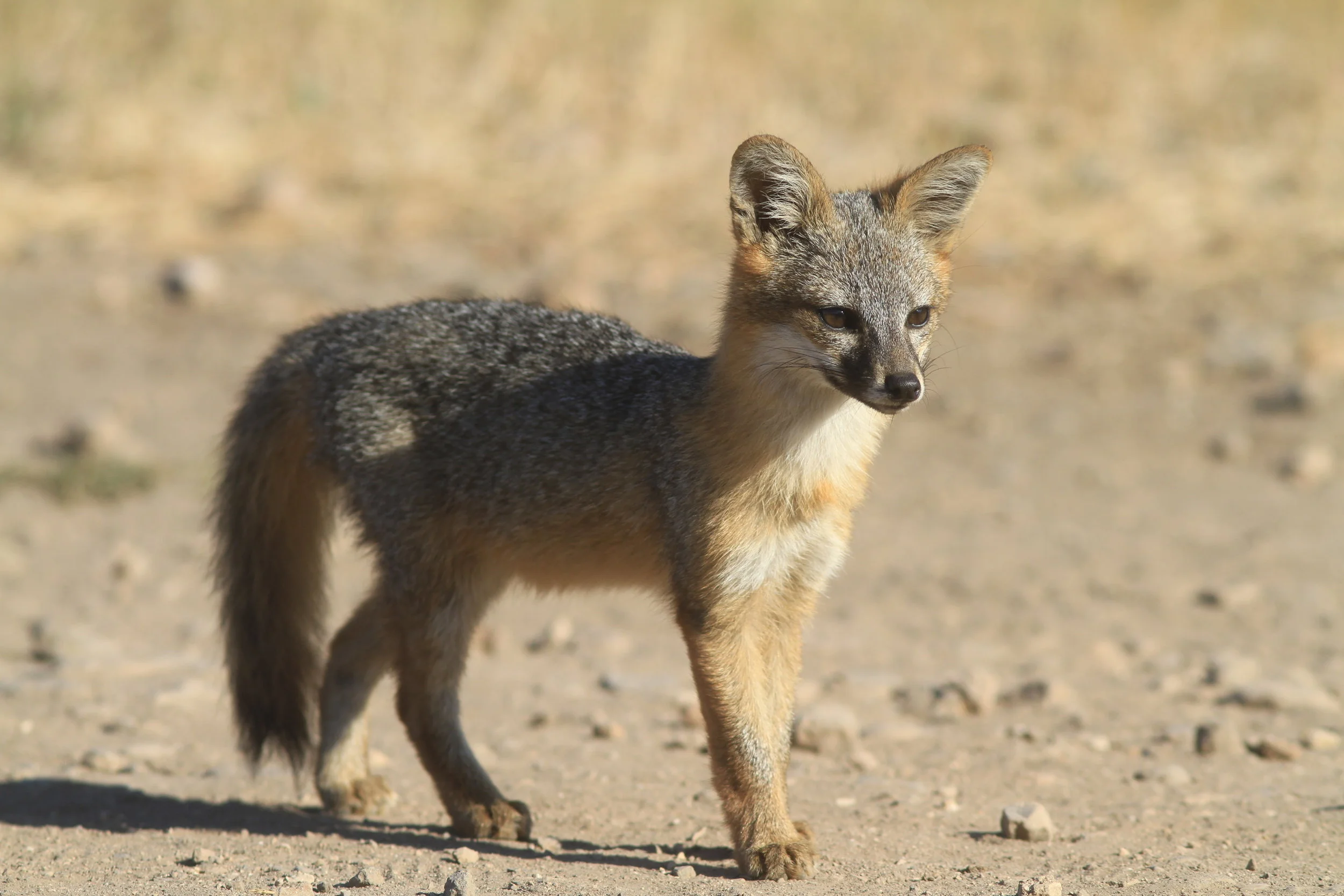Channel Island Fox
"Memory" by Claire Wendling (pencil on paper and digital)
“I choose the fox because it seems that everywhere it lives, it’s not well loved, accused of being one of these pests... And eliminated for that only title of glory. They’re as necessary and loveable than the big five, we just have to really look at them, they’re perfect.”
Your purchase is helping Expedition Art and Saving Species purchase land in Sumatra! Learn more about the project.
Habitat
The island fox is exclusive to the Channel Islands, which are located off the coast of Los Angeles. It populates six of the eight islands, with each population recognized as a unique subspecies. While sand dunes and areas of high topographic and vegetation diversity are the fox’s preferred habitat, it can be found in all different environments and habitats that the island provides. This makes the island fox somewhat of a generalist when it comes to its environment.
Family Life
Pups are born in simple dens under shrubs, downed trees or large rocks. The mother attends the pups in the den for the first weeks, while the male provides her with food. The pair raises the young together. Pups emerge from the den in early June and forage with both parents throughout the summer. Mating pairs typically remain monogamous. Island foxes use vocalizations and facial expressions to demonstrate dominance and submission.
Lifespan
Island foxes have been observed to live up to ten years in the wild but average life expectancy is four to six years.
Hunting Habits/Diet
Island fox diets vary based on the island on which they are found. Santa Rosa Island, for example, has highly diverse food options, including deer mice, crickets, beetles and earwigs. On islands where there is less diversity, diets may include fruits from cactus, manzanita, saltbushes and seafigs. Occasionally, island foxes can be found along the coast searching for marine animals such as crabs for their meals.
Population
As of 2015, there were 520 native foxes on San Miguel and 874 on Santa Rosa, according to the group Friends of the Island Fox. In February 2016, the U.S. Fish and Wildlife Service proposed to take three subspecies of island fox off the endangered species list. Its IUCN status is Nearly Threatened and there are an estimated 4,000 mature individuals in the current population.
Fun Facts
Also known as the Channel Island fox, this creature is the only truly Californian carnivore. Despite its small stature (one of the smallest members of the dog family), it maintains its position as the largest native land mammal on the Channel Islands.
Why are they Endangered?
The 1990s marked a terrible time for the survival of the island fox. Four of the subspecies were subject to near decimation of their populations. San Miguel, Santa Rosa and Santa Cruz Island fox population decline was considered a function of increased predation by golden eagles. All island fox subspecies were classified as endangered in 2004 but, due to successful conservation efforts, have been restored somewhat in their populations.
Status
Near Threatened



